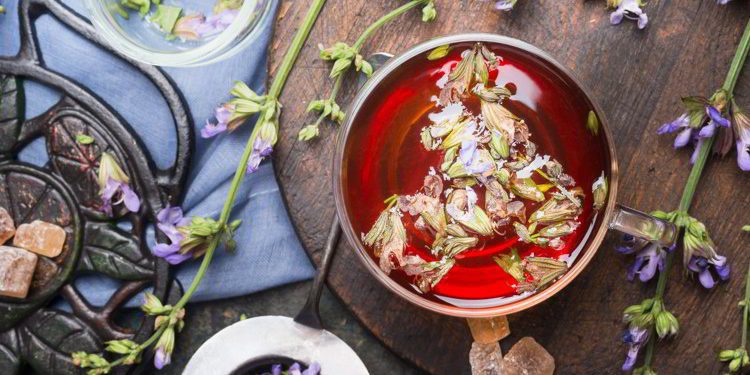The tradition of herbal healing that started before the Mayan calendar is still alive and well in Belize.
Belizeans’ faith in herbal healing remains unabated, and herbal remedies are available everywhere from the local farmers’ market to the gift shop at Francis Ford Coppola’s posh resort Turtle Inn in Placencia.
One of my family’s favorites, available at the San Ignacio market most Saturdays as well as at health food stores in Spanish Lookout and elsewhere, is Jungle Oil by BodyBelize Apothecary. “Repels insects, stops that crazy itch, reduces swelling, heals bug bites” proclaims its label. Belize is refreshingly unfettered by American FDA labeling regulations.
More to the point, Jungle Oil really does do what it claims.
Don Elijio Panti & Rosita Arvigo Herbal Healing
Perhaps the most renowned traditional healer of modern times in Belize was Don Elijio Panti, a shaman and true traditional medicine man.
Rosita Arvigo, an American-trained doctor of Naprapathy, studied with Don Panti, and in the 1994 book “Sastun” she wrote about her adventures. She also penned two more books specifically about the Mayan use of herbs: “Rainforest Home Remedies: The Maya Way to Heal your Body and Replenish your Soul” and “Rainforest Remedies, 100 Healing Herbs of Belize.” All three are available on Amazon.
“Sastun” reads like a novel, a story of Arvigo’s herbal and shamanic apprenticeship with Don Elijio, while the other two are more useful as reference books.
“Rainforest Remedies” catalogues Belizean plants and their uses by the Mayans and others. “Rainforest Home Remedies” includes herbs from Belize and beyond, as well as other advice on natural treatments of common ailments based on Mayan knowledge and philosophy.
If you’d like to try some of the remedies, the prescriptive books contain information about suppliers of the herbs they mention. Additionally, a number of her formulas are also available for sale via Rosita Arvigo’s website. Lastly, you can try Casa Mascia pharmacy.
In addition to co-authoring Arvigo’s books on herbal healing, Dr. Michael Balick, Director of the Institute of Economic Botany of the New York Botanical Garden, worked with Arvigo to create the Belize Ethnobotany Project. Through a contract Balick had with the National Cancer Institute to collect tropical plants for study regarding their effects on cancer, more than 3,000 plants from all over Belize were sent to the United States for further study.
If you fantasize about following in Arvigo’s footsteps, you’re too late to know Don Elijio Panti, who passed away in 1996 at the age of 103. However, there are other traditional healers around, although you would have to search them out through word of mouth and a bit of luck.
You could create a treasure hunt out of looking for more information on herbal healing. You may run into stories like so-and-so’s ex-husband, whom no one in the family is speaking to though he lives next door, has accomplished miracles unknown to western medicine…
Finding a way to connect with him could be an adventure in itself.
Aurora Garcia Saqui Herbal Healing
Don Elijio Panti’s great-niece and apprentice, Aurora Garcia Saqui, offers a herbal clinic as well as a medicinal plant trail at Maya Center, outside Cockscomb Basin Wildlife Sanctuary, near Dangriga. Her book on traditional Mayan healing methods and herbs was released just last year. Its title is “Ix Hmen U Tzaco Ah Maya.” If your Mayan’s not up to snuff, that translates as Maya Herbal Medicine. It’s available on Amazon.
Get Your Free Belize Report Today!
Simply enter your email address below and we'll send you our FREE REPORT – Discover Belize: Reef, Ruins, Rivers, And Rain Forest… Plus Easy Residency And Tax-Free Living
Herbal Healing In San Ignacio
Other medicine trails can be found in San Ignacio at the San Ignacio Resort Hotel, as well as next to Chaa Creek Resort, outside town. The founders and owners of Chaa Creek were friends of Arvigo when both were new settlers in Belize many years ago. Arvigo developed the trail by Chaa Creek. You can either go around the trail alone using a pamphlet available, or you can take a guided tour. Mick and Lucy Fleming, owners of Chaa Creek, have developed their property into a stunning eco-resort in a beautiful spot on the Macal River.
Belize’s Medicinal Plants
The healing properties of the trees and plants that grow so plentifully in Belize are taken for granted by many Belizeans, whether they identify themselves as Mayan or not. Our guide on a cave tubing expedition lectured us on the obvious medicinal properties of the plants we passed as we hiked a mile to the spot where we could put our tubes in the water and begin our float through the limestone caves. He discussed these plants and their medicinal uses as casually and matter-of-factly as an American teenager would discuss taking aspirin for a headache.
Some of these explanations provided an amusing insight into Belizean culture. The gumbo-limbo tree, for example, provides an antidote to allergic reactions to poisonwood. The sap of poisonwood creates a reaction similar to that of poison oak and poison ivy.
In addition to reactions to poisonwood, sunburn, rashes, skin sores, and measles can also be relieved by taking a strip of gumbo-tree bark, 2 inches wide by 10 inches long, boiling it for 10 minutes, and bathing the affected area 3 times a day. The locals refer to the gumbo-limbo as the “tourist tree” because its peeling bark reminds them of the skin of sunburned tourists.
The herbal healing traditions of this area have inspired various natural healers to develop their own herbal repertories rather than practice those of others. Rev. Dr. Bonnie Mamaearth Russell of Bullet Tree in Cayo, for example, came to Belize with her own line of herbal remedies. Nonetheless, spending time in Belize inspired her to develop a new line, using the herbs and plants that grow so abundantly in this fertile country.
Casa Mascia Apothecary
Drs. Mandy Tang and Alessandri Mascia, a married couple who are both medical doctors, started Casa Mascia Apothecary after seeing dramatic results in patients who had consulted bush doctors. Copal, which is plentiful in Central America, worked so well on skin problems like impetigo and dermatitis that the medical doctors were motivated to research it further. They found it also works on rashes, itches, burns, insect bites, skin infections, fungal infections, and muscle aches and pains. They offer a blog and an apothecary online.
Belize’s Herbal Healing Doesn’t Stay Within The Country
In addition to these doctors developing their own remedies, there are a few shops in different locations that stock herbs of recognized American brands. Reimer’s Health Foods in Spanish Lookout also carries literature about using Belizean and other herbs in ways not familiar to me in the U.S.
Elizabeth Penner, who bills herself a professional herbalist and uses only her first name at her Ultimate Herbal Health Food Stores in Belmopan and Spanish Lookout, stocks an extensive range of herbs in capsules from such familiar American producers such as Nature’s Sunshine. She also offers herbal consultations in the Belmopan store.
Unfettered by American health advertising laws, she lists diabetes, malnutrition, hypertension (high blood pressure), osteoporosis, cancer, high cholesterol, and cardiovascular problems as ailments that she can treat. These claims may seem overstated or spurious to the average North American, but bear in mind, a much higher percentage of the world’s population relies on herbal and plant remedies for their health care rather than on what we consider standard pharmaceuticals.
Many of the drugs that Western doctors rely on originate from plants. For example, digitalis (dried leaves of the foxglove) is used in medicine for heart problems and commonly administered morphine comes from the white poppy.
Perhaps Belizeans never forgot something we would do well to remember…
Carolyn Casey
Belize Insider











